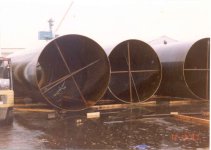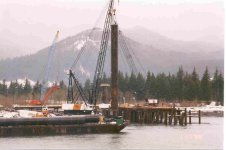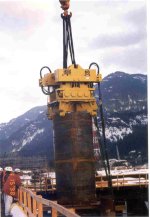Mark @ Everlast
Advertiser
A couple morethings about the duty cycles on welders. They are typically rated at 40degrees C in the US according to UL(US) standards. Lower temperatures less than than 104 degrees do greatly improve duty cycle in most cases. But every welder is different, particularly how the cooling system is designed. On demand fan systems which seem popular typically offer reduced duty cycle in many cases. It used to be US and Canadian duty cycles were rated the same. Last year, Canadian standards changed duty cycle to 47 C if I remember correctly. So units certified in CA and the US have now different duty cycle ratings unless a company wants to lowball the duty cycle rating or change the cooling system to make certification easier.
Also when a duty cycle event (interrupt or trip) has occurred, many mfgr's tell you to allow the unit to cool for at least 15 (or even 20) minutes while running without welding. This is important because residual heat is still being transferred from the electronics to the heat sinks/radiating medium and temperature may still climb even after ceasing welding before going back down. Staying under the duty cycle a wait for the balance of the 10 minute cycle will suffice.
The real problem comes where people are buying a machine for it's maximum capability and expect it to perform at that day in and day out. I know someone is going to say a "real industrial machine" should be able to take that. But I liken it to someone buying a car for it's maximum top speed and driving at that top speed day in and day out expecting it to last. Who does that? Really I think a person should buy a machine that exceeds daily maximum capacity expectations by 25% to 50%.
I frequently try to work with people who want to by a 200 amp TIG machine and they tell me they will be welding 1/4" aluminum every day and encourage them to buy a 250 or 325 amp machine instead. Sure there is a big price difference, but the extra power and duty cycle is worth the price. The same issues exist for plasma cutters. People buy them for the max cut capacity and fail to read into it that this is the max expectation and not always the best cut capacity and it does tax the duty cycle.
Also when a duty cycle event (interrupt or trip) has occurred, many mfgr's tell you to allow the unit to cool for at least 15 (or even 20) minutes while running without welding. This is important because residual heat is still being transferred from the electronics to the heat sinks/radiating medium and temperature may still climb even after ceasing welding before going back down. Staying under the duty cycle a wait for the balance of the 10 minute cycle will suffice.
The real problem comes where people are buying a machine for it's maximum capability and expect it to perform at that day in and day out. I know someone is going to say a "real industrial machine" should be able to take that. But I liken it to someone buying a car for it's maximum top speed and driving at that top speed day in and day out expecting it to last. Who does that? Really I think a person should buy a machine that exceeds daily maximum capacity expectations by 25% to 50%.
I frequently try to work with people who want to by a 200 amp TIG machine and they tell me they will be welding 1/4" aluminum every day and encourage them to buy a 250 or 325 amp machine instead. Sure there is a big price difference, but the extra power and duty cycle is worth the price. The same issues exist for plasma cutters. People buy them for the max cut capacity and fail to read into it that this is the max expectation and not always the best cut capacity and it does tax the duty cycle.




